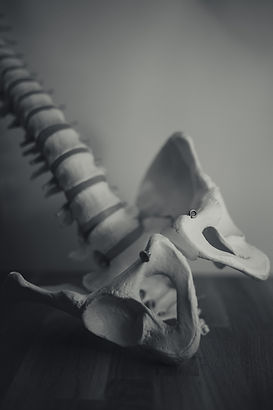
DORSAL ROOT GANGLION (DRG) STIMULAITON
Dorsal Root Ganglion (DRG) Stimulation is the newest technology and treatment available in the United States to those who are still experiencing pain after an injury or surgical procedure.
DORSAL ROOT GANGLION STIMULATION - THE OUTCOME FOR PATIENTS
-
This procedure REDUCES PAIN in an average of 81.4% at 12 months
-
DRG PROVIDES PERSISTANT PAIN RELIEF to 86% of patients at 12 months

The newest technology and treatment available in the United States to those who are still experiencing pain after an injury or surgical procedure. This revolutionary procedure has changed the way we can treat chronic pain or complex regional pain syndrome (CRPS). The clinical trials for this procedure, DRG Stimulation, has proven to provide superior, long-lasting pain relief.
Along the spine, we all have a cluster of nerve cells, which is called Dorsal Root Ganglion. (DRG) Research has found that specific groups of these nerves control pain signals or messages that is communicated from area of pain, knee, pelvis, to the brain. This messaging causes the body to experience symptoms such as tingling, burning, jabbing and other pain signals. With placement of stimulation on specific parts of the DRG, it is possible to interrupt those signals before they reach the spinal cord or the brain.
This treatment is a very effective treatment approach for specific neuropathic conditions, which include CRPS, pelvic pain, groin, hip, knee, ankle, abdominal, foot, extremity pain and other nerve pain within isolated parts of the body.
Commonly, with these conditions, one may experience one or more of the following symptoms along with
chronic pain:
-
A burning or freezing feeling.
-
Throbbing pain.
-
Sharp and/or jabbing pain.
-
Pins and needles sensation.
-
Numbness.
-
The feeling a body part is being squeezed.
-
Sensitivity to touch.
-
Loss of coordination.
-
Muscle weakness or an inability to move part of the body.
This new technology has made a remarkable difference in the treatment of chronic pain. The following data is based on the study preformed in 2017 and they speak for themselves.
-
74.2 percent of people experienced meaningful pain relief with DRG stimulation, compared to 53 percent who received traditional spinal cord stimulation.
-
One-third had over 80 percent pain relief and no tingling sensation, which can be a side effect with traditional spinal cord stimulation.
THE RESEARCH:
Researchers found in 2017, the Dorsal Root Ganglion (DRG) a bundle of nerves that are located outside of the spinal cord to play a key role in nerve pain. The published studies, https://www.ncbi.nlm.nih.gov/pmc/articles/PMC5359787/, showed that when stimulation was used on the DRG it would effectively help relieve pain. This has led to helping many people with chronic pain finally find relief and live fuller, healthier lives.

TREATMENT AREAS:
Groin or Abdominal Pain After Surgery
Even with the best surgical procedure, a nerve can be injured. 8.5% of all patients experience chronic pain after a hernia repair surgery.
Knee or Hip Pain After Surgery
Even with the best surgical procedure, a nerve can be injured. 15% of all patients experience chronic pain after a total knee arthroplasty and 6% of all patients experience chronic pain after a total hip arthroplasty.
Foot and Ankle Pain After Surgery
Even with the best surgical procedure, a nerve can be injured. 5.3% % of all patients experience chronic pain after foot or ankle surgery.
Amputation Pain After Surgery
Even with the best surgical procedure, a nerve can be injured. 30-85% patients continue to have pain beyond the normal healing time. This makes it impossible to experience the full benefit of a prosthesis.
Pelvic Pain After Surgery
Pelvic pain is a disorder that can affect both men and women. The pelvic area contains multiple nerves. Even with the best surgical procedure, a nerve can be injured. 32% of patients experience chronic pain following a hysterectomy. 15% of patients experience chronic pain following a mesh replacement. 13% of patients experience chronic pain following episiotomy.
Facts and Advantages of DRG Stimulation:
Pain After Surgery:
-
Mechanically, the surgery was a success, and the surgeon does not recommend additional surgery. One may have exhausted treatment with opioids, injections and other traditional therapies, yet the pain is real. What now?
-
Patients can try DRG Therapy without committing to another surgery.
-
Post-surgical pain is not the outcome that anyone would like to have, including the surgeon, but regardless of even the best treatment with the best surgeon, it can lead to a disappointing and life altering aftermath of chronic pain. Pain is considered a “diagnosis of exclusion” and only entertained after more obvious and testable possibilities are ruled out. This is where we can help. Chronic pain does not have to control and limit your life.
-
Patients can have pain specific to each area in which the surgery was performed, but in general, the pain is all neuropathic. Meaning that it is caused as the result of nerve damage. Depending on the nerve involved or the injury, the part of the body which will experience pain will be different.
The DRG stimulation therapy system is made up of the following:
-
Generator: A small device that sends out mild electrical pulses to your body and blocks the messages or signals of pain. The first step is a trial and the second step, if you receive relief, is where it is implanted in your body.
-
Leads: Thin insulated wires that carry the electrical pulses from the generator to your dorsal root ganglia. These are placed in your body in the specific correlating area of pain.
-
Patient controller: A handheld “remote control” that allows you to adjust the strength and location of stimulation or even turn stimulation off. It is Bluetooth compatible and can be used with most mobile devices.












